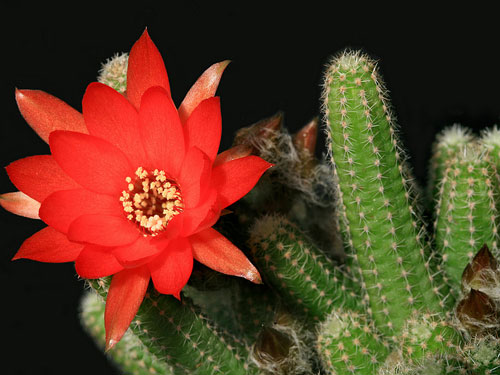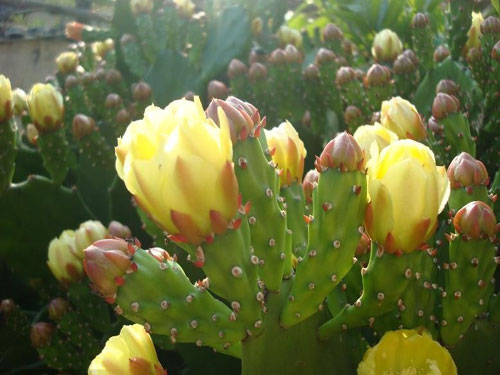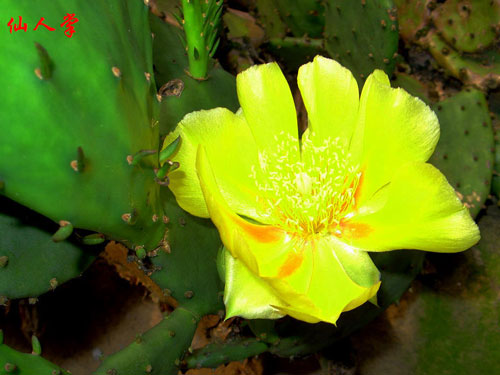Cactus flower, how to make cactus blossom?
The cactus is supported by the "desert sweet spring" and has a strong ability to resist drought and the scorching sun, and then even under such difficult conditions, the cactus can still blossom because of its perseverance and indomitable vitality. We all admire the breeding of cactus, looking forward to cactus flowers, but sometimes the cactus just does not bloom. How on earth to make the cactus blossom?

There are many reasons why the cactus can not blossom early, which can be divided into two aspects.
A. related to germplasm, that is, the years needed for different species to blossom are quite different, with a short sowing time of only 2 to 3 years and a long time of 20 to 30 years or more.

B, related to sunlight, temperature, fertilizer and mode of reproduction. In order to promote its early flowering, it is suggested that we start from the following aspects.
1. Temperature: the suitable temperature of cactus is generally 20-30 degrees, and it is best to have a large temperature difference between day and night to avoid the muggy and high temperature in summer. when the temperature is about 35, most species grow slowly and enter the hibernation period when the temperature exceeds 38 degrees. The temperature in winter is at least above 5 degrees so that there is no chilling injury.

2. Lighting: the light is very important, and the temperature of the cultivation conditions is appropriate. When Rain Water is not much, try to breed outdoors as much as possible. There is a ventilated environment with high ultraviolet radiation, which is conducive to the healthy growth of plants and reach the age of flowering as soon as possible.
3. Culture soil: the soil is as nutritious as possible, breathable and fluffy, which is best for the development of plant roots, and is beneficial for plants to absorb water and air.
4. Moisture: watering should be appropriate, excessive will make the root system mildew and rot. For general terrestrial varieties, watering should be strictly controlled during dormancy to keep the basin soil slightly moist and not too dry. The room temperature is more than 15 ℃ in winter, and it can be watered normally. When the room temperature is 5-10 ℃, the water can be watered once every semimonthly, and the water can be completely stopped when the temperature is less than 5 ℃. From April to June, it can be watered every 1 to 2 days. From July to August, when the temperature exceeds 38 ℃ to 40 ℃, plants are forced to dormancy. Ventilation should be strengthened, watering should be controlled, and normal watering should be resumed after the autumn is cool.

5. Fertilizer: pay attention to fertilization in the growing season, which can promote plant growth to blossom as soon as possible, and stop fertilization when the temperature is higher than 32 degrees or below 20 degrees, so as not to damage the root system and lead to death. fertilizer can be used with chicken dung, horse and cow dung, cake fertilizer, bone meal, etc., diluted and applied after full maturity. However, it should be careful not to let the fertilizer splash on the plant, otherwise it is easy to cause palm or sphere to rot. In addition, 0.3% potassium dihydrogen phosphate or heavy superphosphate solution can be properly poured. When fertilizing, special attention should be paid to plants newly potting, plants with poor growth, plants with poorly developed roots and so on. Organic fertilizer that has not been fully fermented shall not be applied, and broth and vegetable soup containing salt shall not be poured.
Editor's recommendation: bathroom cabinet picture, bathroom cabinet effect map introduction to indoor cultivation and planting skills of gardenia
Related
- Wuhan Hospital Iron Tree Blooming Result Was Instantly Frightened by the Gardener Master
- Which variety of camellia is the most fragrant and best? Which one do you like best?
- What is the small blue coat, the breeding methods and matters needing attention of the succulent plant
- Dormancy time and maintenance management of succulent plants during dormancy
- Minas succulent how to raise, Minas succulent plant pictures
- What are the varieties of winter succulent plants
- How to raise succulent plants in twelve rolls? let's take a look at some experience of breeding twelve rolls.
- Attention should be paid to water control for succulent plants during dormant period (winter and summer)
- Watering experience of twelve rolls of succulent plants
- Techniques for fertilizing succulent plants. An article will let you know how to fertilize succulent plants.



